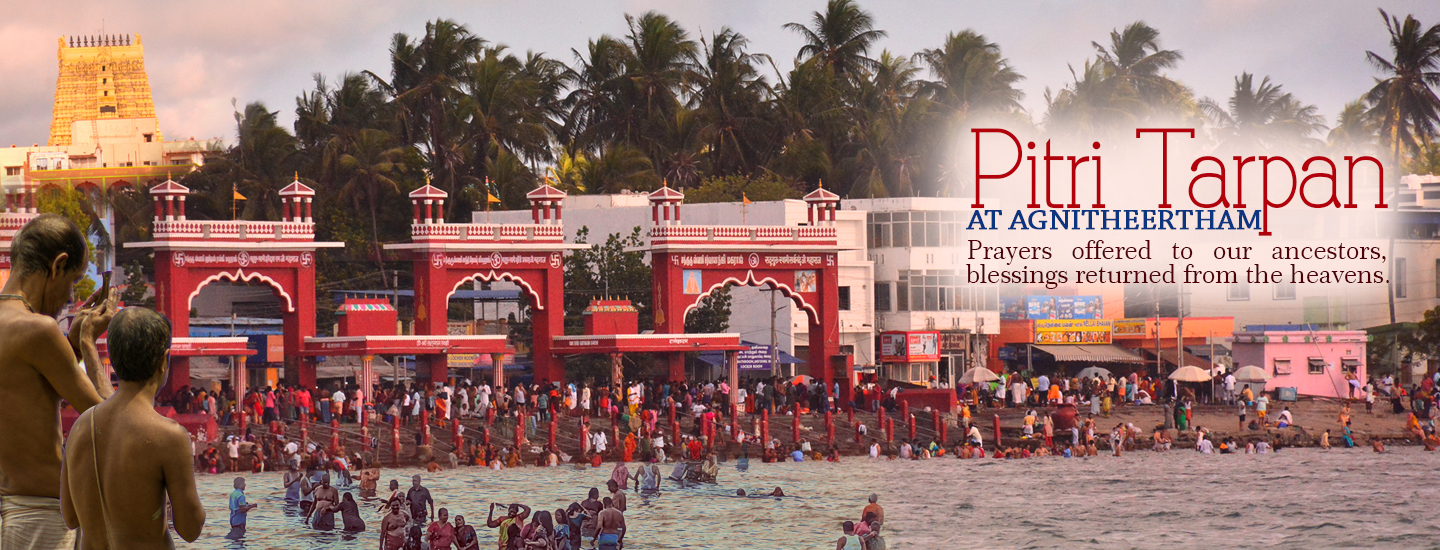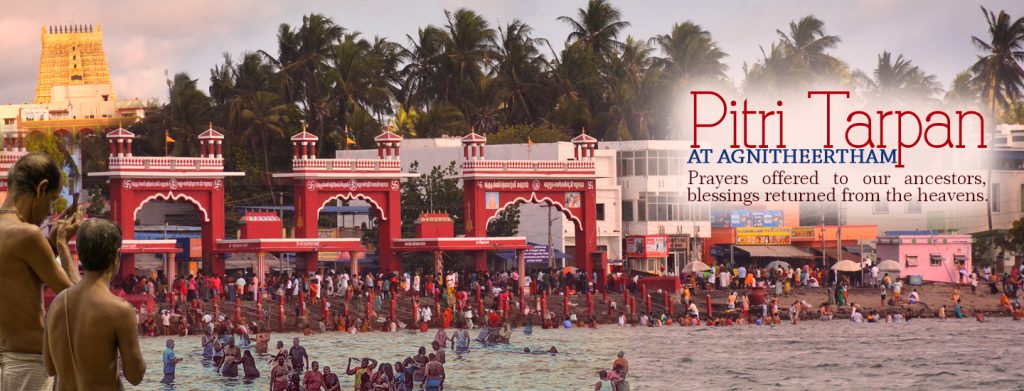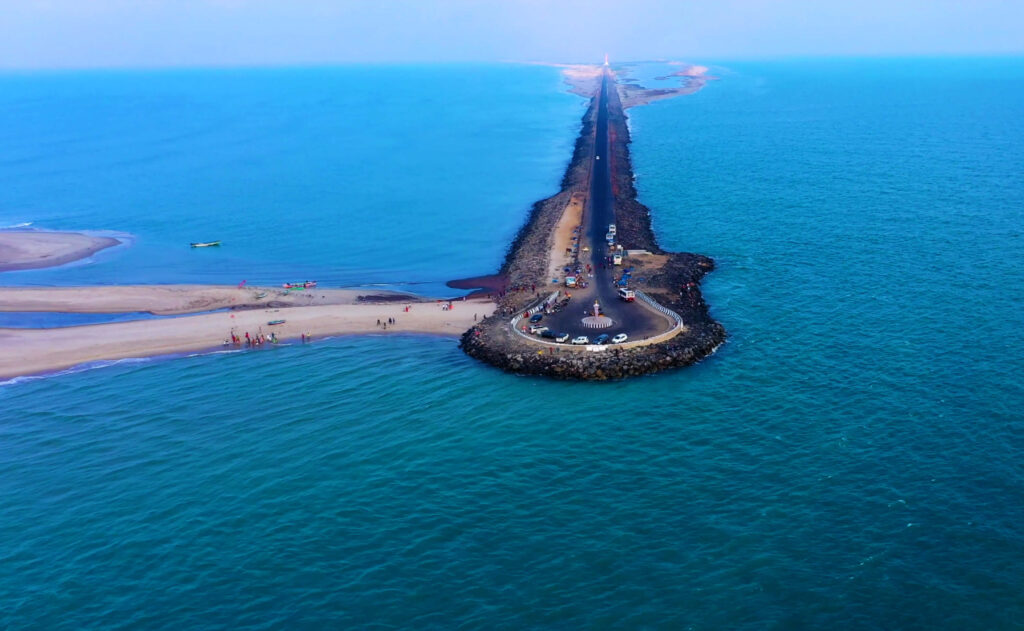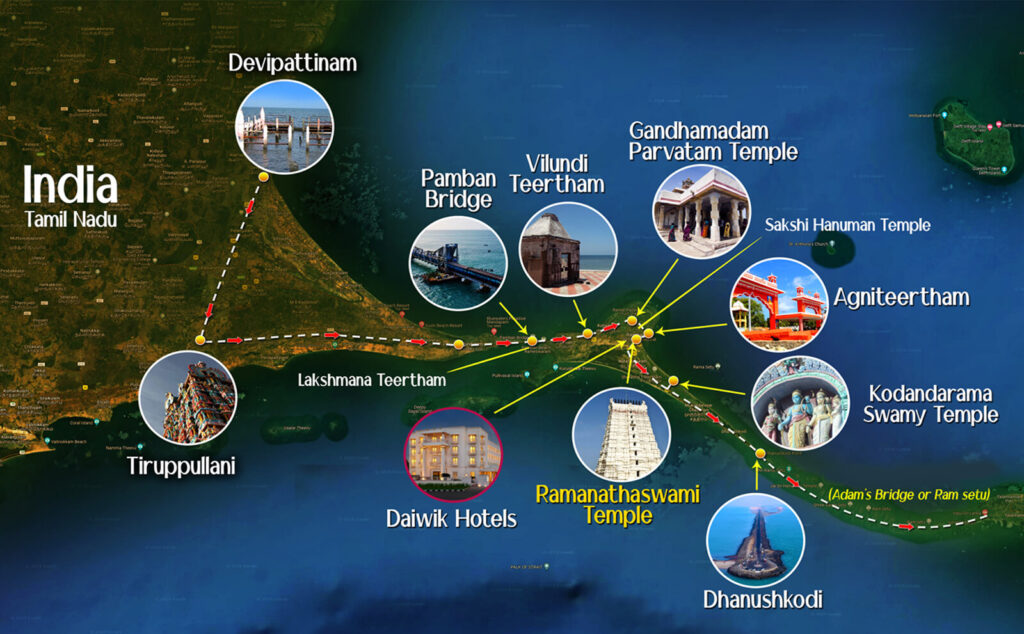Rameswaram, one of the holiest pilgrim destinations in India, holds immense spiritual significance for Hindus. Nestled on the serene Pamban Island in Tamil Nadu, it is not only known for the majestic Ramanathaswamy Temple but also for its sacred seashore – Agniteertham. Among the many rituals performed here, Mahalaya Amavasya and Pitri Tarpan hold a special place, as devotees from across the country gather to offer prayers for their ancestors.
The Significance of Mahalaya
Mahalaya Amavasya, observed just before the auspicious Durga Puja, marks the end of Pitru Paksha, a fortnight dedicated to honoring departed ancestors. According to Hindu belief, this is the time when the souls of our forefathers descend to earth, and offering them food and prayers helps them attain peace and blessings. Performing rituals on this day is said to bring prosperity, harmony, and divine protection to the family.
For many devotees, traveling to Rameswaram during Mahalaya has become a sacred tradition. The spiritual aura of this temple town, combined with the vibrations of continuous chanting and rituals, creates a divine atmosphere that is hard to describe in words.
Agniteertham – A Sacred Seashore
Situated just a few steps away from the eastern gopuram of the Ramanathaswamy Temple, Agniteertham is a holy spot where thousands of devotees take a ritual bath before performing Pitri Tarpan. Legends say that Lord Rama worshipped Lord Shiva here after defeating Ravana, and since then the sea waters at Agniteertham have been considered purifying.
Bathing in these sacred waters is believed to cleanse sins, liberate the soul, and help ancestors attain moksha (salvation). It is for this reason that Mahalaya rituals performed here are considered especially auspicious.
Pitri Tarpan – Honoring Ancestors
Pitri Tarpan is the act of offering water, sesame seeds, and prayers to one’s ancestors. Priests guide devotees in the rituals, chanting mantras while offerings are made with folded hands facing the sea. Families sit along the shoreline, each carrying small brass or copper vessels filled with water, flowers, and rice balls (pindas) prepared for the departed souls.
The atmosphere at Agniteertham during Mahalaya is deeply moving. Waves touch the feet of devotees as they pray, seagulls circle above, and the rhythmic sound of Vedic chants fills the air. For many, this becomes not just a ritual but also an emotional moment of connection with loved ones who are no longer with them.
A Journey of Faith
Pilgrims believe that performing Mahalaya and Pitri Tarpan at Agniteertham is not only ensures peace for the ancestors but also strengthens the bond between generations. The entire experience, from the ritual bath to the offering, leaves devotees with a sense of fulfillment and divine grace.
Rameswaram is a place where spirituality meets tradition, and Agniteertham serves as a bridge between the earthly and the eternal. On Mahalaya Amavasya, when thousands gather at the seashore to perform Pitri Tarpan, the town radiates an energy of devotion and remembrance. For anyone seeking a sacred experience filled with cultural and spiritual depth, witnessing or participating in Mahalaya rituals at Agniteertham is truly unforgettable.
















